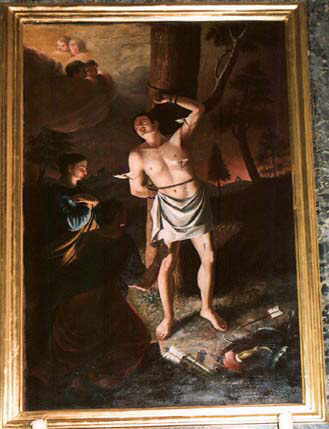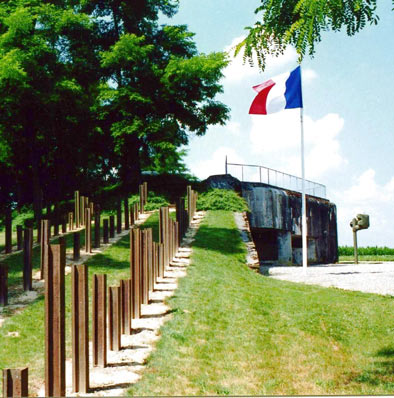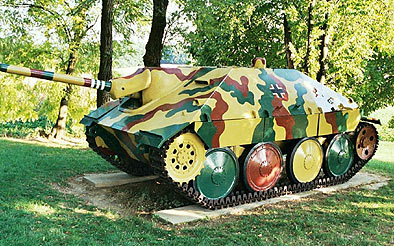 The old mill (1838)
The old mill (1838) |
Habitat
Right at the beginning, at the number 1 of the rue du 20 novembre,
one sees one of the old mills of the locality, the Werbenmuhle.
At number 3, is an industrial complex installed in barracks of
before 1939. At number 42, one can see a sundial carrying the
name of the Bacher provost and the year 1771.
Behind the town hall dated from 1840, take the rue de l'Eglise
(church street), circumvent the sanctuary, to join the ue du
Général Béthouard. Beautiful old houses
at number 13 (1606), 11 (1696) and 7, the old residence of the
miller.
|
Saint Michael Church
Uffheim depended formerly on the mother-church
of the Hochkirch and it is in 1782 that the old chapel became
parish church to yield its place in 1829 to the current sanctuary
which preserves a bell-tower of the 14th century.
The church contains two paintings of the native artist of the
place, Sebastien Gutzwiller (1798-1872), the first representing
Saint Michael and the second the Immaculate Virgin. On the right
side altar, a painting of another local artist, Louis Heimburger
(1806-1882) shows the sorrows of Saint Sebastian. |
 The sorrows of Saint Sebastian (Louis Heimburger)
The sorrows of Saint Sebastian (Louis Heimburger) |
|

Visits: Each first Sunday of June,
May, July, August, September, as well as on July 14 and third
Sunday of September, days of the Open Gates Historic buildings.
Entry adults: 12F, children less than 16 years; 5F
groups of more than 20 people: 10F.
Guided tours on Rendezvous for groups every saturday and Sundays
from May to September included.
Information: Town hall of Uffheim to the 03.89.81.51.42

|
The Aeschenbach Casemate
Link of a long chain of fortifications
built from 1929 to 1940 on a front of more than 600 kilometers
from the North and the Ardennes to the Swiss border, this casemate
belonged to the fortified sector of Altkirch which covered the
Sundgau from the Rhine to the Alsatian Jura.
The " Aechengraben " casemate is one of the 32 casemates
of infantry built in the Sundgau and reinforced by seven artillery
casemates with two pieces of 75 each (range 11 kilometers). Two
of these artillery works are located at one kilometer behind,
in Werbenmühle of Uffheim, a third at Sierentz close to
the Hospital. Their mission was to prevent a possible enemy overflow
by the Basle area and the Swiss territory.
With thicknesses of concrete exceeding 2,25 m, an armament made
up of two anti-tank guns of 47 mm, of two machine-guns of 8 mm,
a watching- and close-defense-bell of 17 tons, this block was
occupied by a crew of about 20 men and a warrant officer. A lieutenant
controlled a group of 3 to 4 casemates.
This old fortification, dismantled in 1972, was taken in charge
in 1991 and, as an element of the communal historical heritage,
completely restored by the History Societey of Hochkirch (société
d'Histoire de la Hochkirch). It is about the only casemate renovated
in High Alsace, enbryon of the memorial museum of the Maginot
Line in South Alsace.
More information in the book
"39/40
dans le Sundgau"
from La Société d'Histoire de la Hochkirch
Website of the casemate:
www.maginot68.com
presented by
l'Association Mémorial Maginot de Haute Alsace |